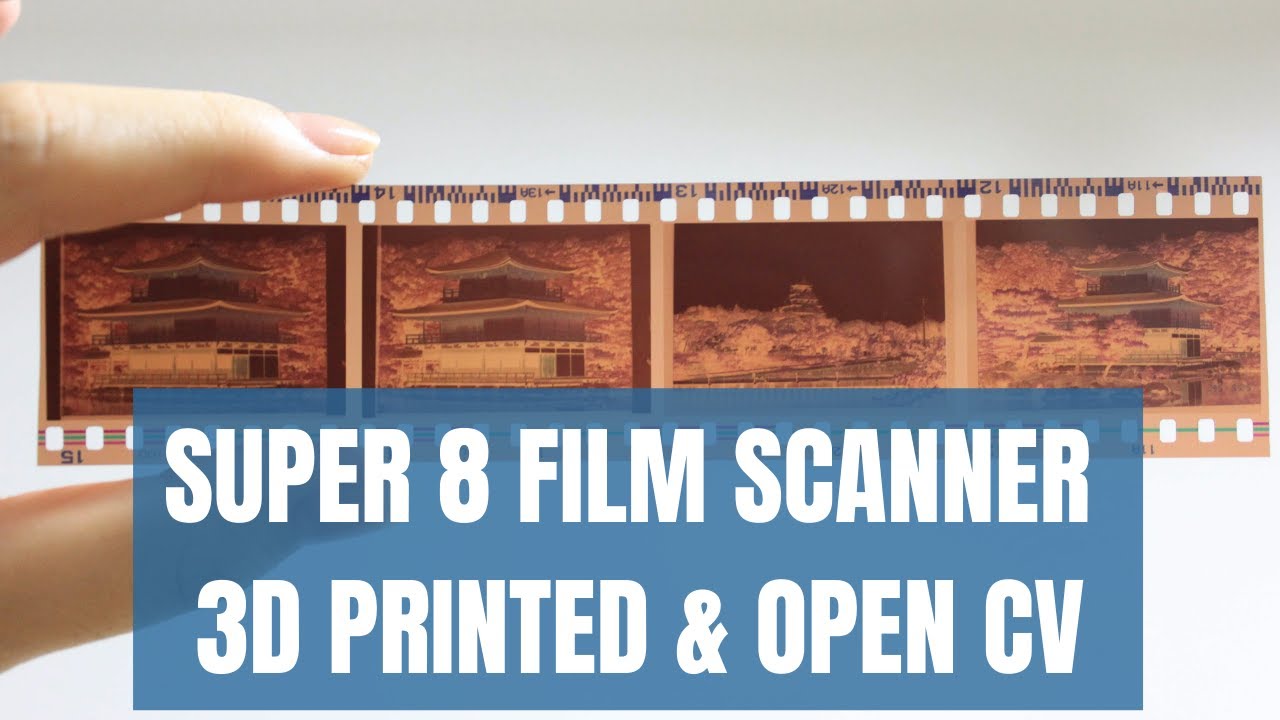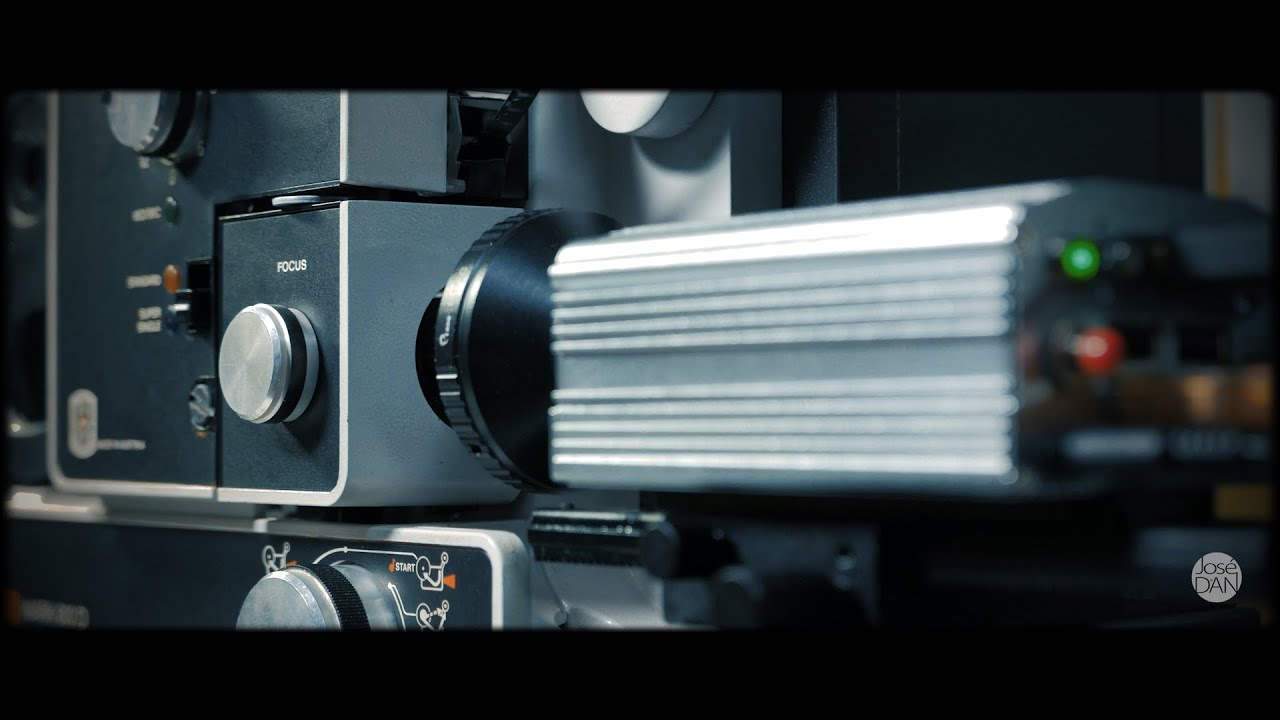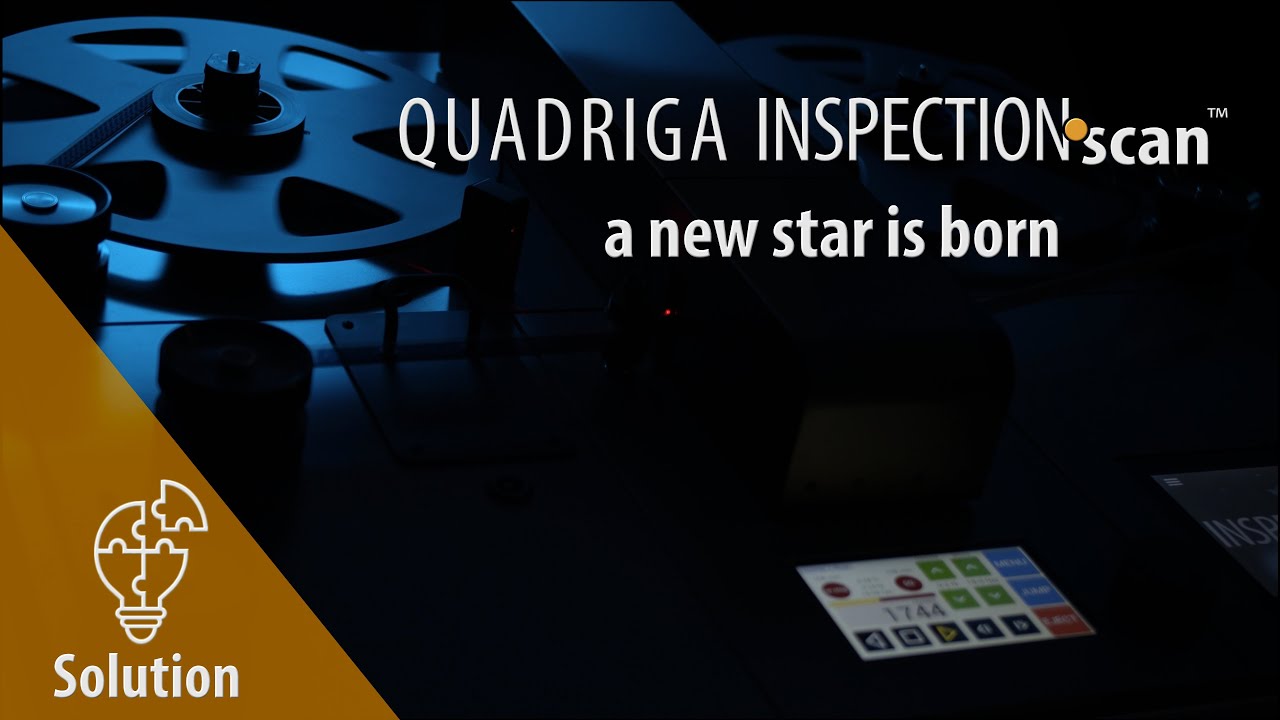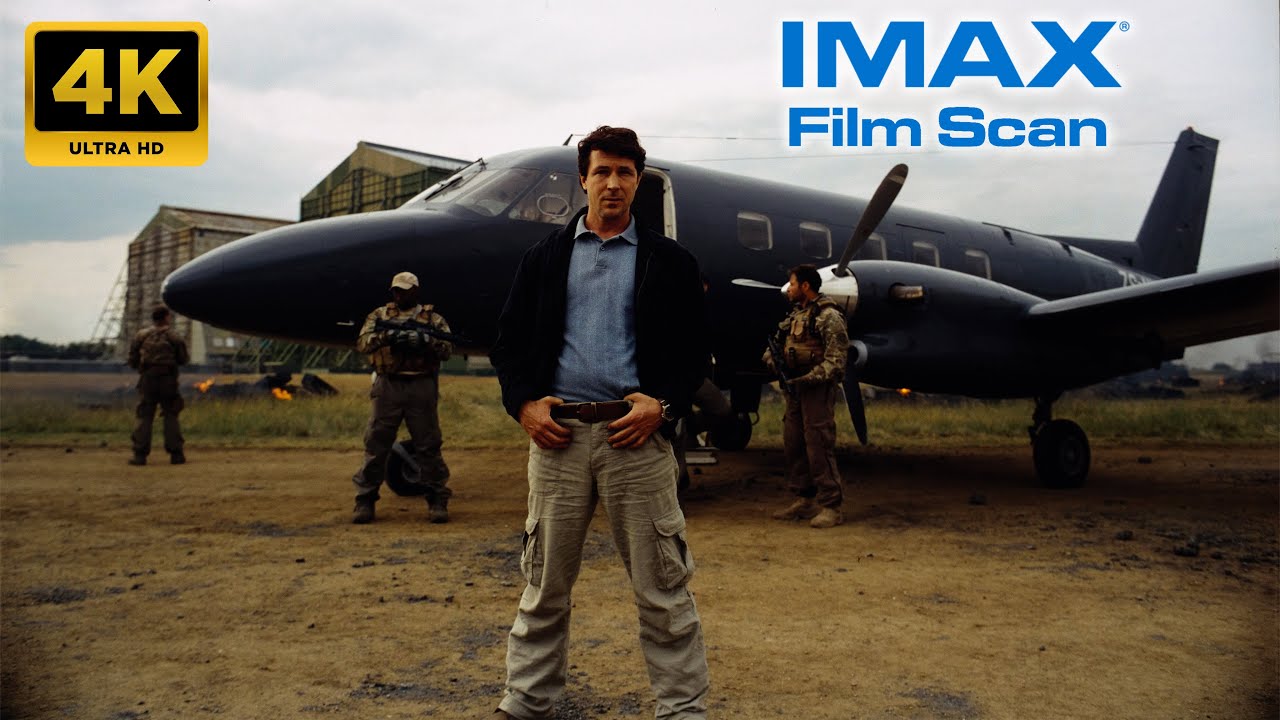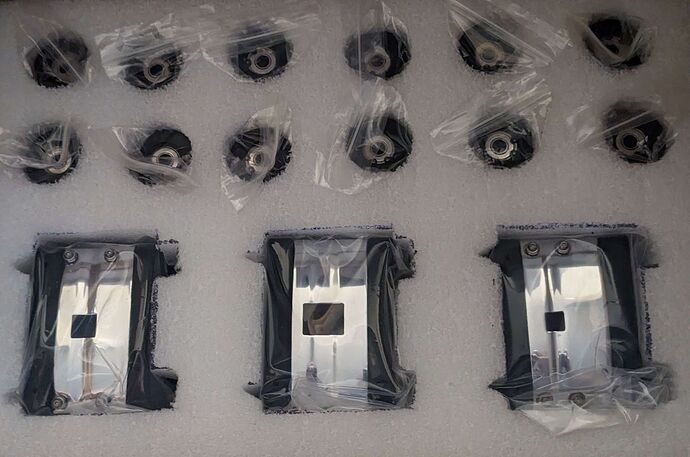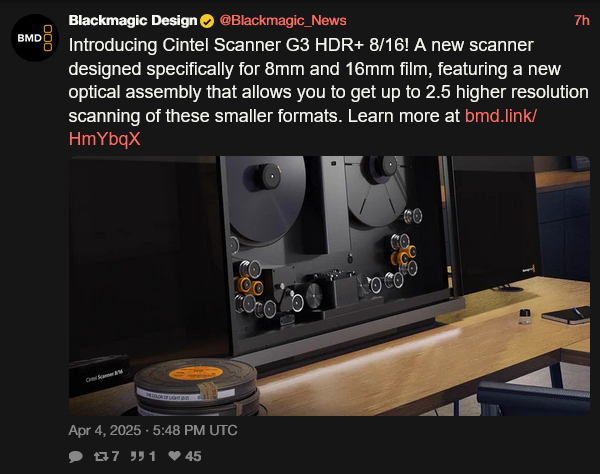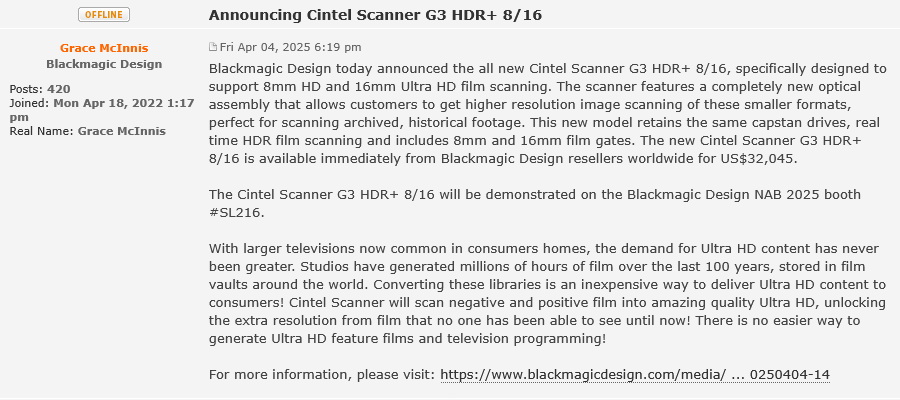Youtube find… This is an interesting take on the 8mm step motion approach. Great video with lots of information and all shared in the author github.
Another Youtube find. Not exactly about a machine, but more about the scanning/restoration process. How a 100-Year-Old Animated Film Is Restored! - YouTube
Sorry, I can’t get news about the updated version of kinograph. Not produced yet?
Hi there,
I’ve landed here just now. Seems the good place to add a ref to my covid-confined project then. I guess it lands in the DIY catergoy ![]()
All codes are GPLv3, feel free to use or ask questions on the github account, especially for the HDR stacking and flattening of the optical system defaults:
Some already done scans can be seen on vimeo, in low res (full HD only)
The scanned output from my scanner is in x264 lossless with ~3K vertical resolution (half-frame), but that’s an overkill when the actual 16mm are copies and not originals (damages in resolution are already visible in full HD).
Cheers,
Chris.
Sharing a couple of interesting youtube finds, from the same builder.
A machine to clean 8mm film
His build for a stop-motion projector based scanner
And this webpage (scrolldown) has the building process.
And a new 10-15 Perf 70mm DIY scanner:
I’ve added this and the Cube-Tech along with the base price to the OP.
This is the complete euro format kit for the LaserGraphics ScanStation. 28/17.5/9.5mm and the tri-format euro rollers. On the ScanStation’s film transport module you replace all the regular 35/16/8 rollers except the capstan with these ones and then use the gate (the skid-plate) for the format.
There was a certain person who said a few years ago that these gates don’t exist! They certainly do and they are entirely separate hardware. What is very impressive is that the film transport module supports all these formats at once (35/28/17.5/16/9.5/8/S8) and the rollers are all tri-format, so when changing between 35mm and 8mm for example you don’t need to change the rollers you just put in the gate and set up the film platters using the spacers behind them, but if you have a volume of 9.5mm to run as an example then you replace all the rollers you see as well.
Those look like Archivist gates, not ScanStation gates. (Unless Lasergaphics has changed the gate design on the ScanStation, that is).
Those belong to a full 6.5K ScanStation, not an Archivist.
Oh nevermind. I didn’t expand the image and on my phone it wasn’t obvious they were still in the foam shipping material.
Hi everyone!
My name is William, and I took over day-to-day operations at Filmic Technologies a few months ago and have been working with the team full time over the last year.
Suffice it to say, if anyone has questions about what Filmic Tech. is working on, products, software, etc., feel free to ask. I’m sure I’ll have plenty of questions about your community, the devices you use, your workflow, and your expectations/goals.
Thank you in advance!
Hey everyone!
I’ve done some basic patent search on film scanning (just Google Patents and web searches) and found about a dozen active patents in the US. Many of them have extremely broad claims, and some even seem identical to others. That leads me to one question: How are all these smaller film scanner companies not getting sued by companies like Blackmagic, Lasergraphics? They all pay a license or something? A patent lawyer I spoke to saying even releasing a design as open-source could still invite legal trouble. But then, how does Kinograph (the open-source scanner project) manage to do this? Are people just less paranoid than I am?
Cheers!
I don’t have a definitive answer for you, but I can tell you what the IP (intellectual property) lawyer I met with when I first started this project back in 2013.
In essence, he told me that there was nothing patentable about a Kinograph since it did not approach film scanning in a “new and novel” way. The answer also applied to the patents of others. If they were using something novel, then I should probably look out to not copy it.
Some examples of what could be already patented could be: software or algorithms, or specialized hardware like a wet gate, or sound head, or lighting setup that is unique in some way.
At the time, there were a small number of people that were interested in Kinograph as a business. But with a limited market and user base, Kinograph doesn’t offer the high rate of return that investors expect to see. This left me with two choices: make Kinograph a small business or open it up. If I had gone the small business, the price would have to be high in order to cover operational costs to keep the doors open (and continue R&D and customer support, and shipping, etc).
We cannot, therefore, infringe on any copyrighted features from other machines. However, it can be difficult to know whether or not we are. Therefore, we will do out best to remain “un-novel” and handle any claims of infringement as they come in. So far, I don’t think we’re doing anything that would cause an issue, but just because I think so doesn’t mean it is so.
A patent attorney once told me, all a patent does is give you the right to sue someone or to be sued by someone. You really have to read the claims section of the patent to understand what the patent is covering. So that may explain some of the apparent overlapping claims. Another thing to look into is the listing of prior art. In some ways, that is the patent offices way of making you do the heavy lifting of proving your invention is novel and not a rehash of other patents, even expired ones.
Getting a patent issued can be quick and easy or nearly impossible depending on the examiner. Some will question the novelty or validity of your invention (and therefore whether one is issued a patent at all). Some inventions that can be issued that are essentially invalid or rehashes of prior art, and would therefore be indefensible in court. Again, that comes down to the quality of the work done by the patent examiner.
Then there is the fact that the patent only provides protection against commercial infringement. If you build an exact replica of, say a Lasergraphics scanner for yourself and don’t sell it, there is no basis for a case. You, me, everyone on this forum can build our own exact copy of the Lasergraphics scanner. (that said, if the design was acquired by a member of the group and distributed as open source, yes, that would be a bad idea).
Now, lets say a company, or someone on this forum builds a scanner, or even a component (like a film gate) that completely infringes on a valid patent. The company holding that patent has to become aware that infringement, then they have to issue a cease and desist letter, telling the infringer to stop. At that point it’s in the infringers court on how to proceed.
If the infringer is some small potatoes company/organization, they get scared and stop, if it is say Apple, they say “go pound sand, sue us, we have dozens of IP attorneys sitting around with nothing to do”. The patent holder goes to their IP attorney and asks him to sue Apple. The IP attorney, if they are decent ask what it’s worth because it’s going to be very, very expensive fighting Apple and they may not win. If they do win, sure Apple stops, but what has it cost to get Apple to stop.
If you’ve ever talked to an attorney, they tend to make you scared to do anything. Saying that an open source design could infringe on a patent and invite legal trouble is so non-specific that it can be true. Unless one is outright copying another design and releasing it as open source, it would be much less likely to be a problem.
Even if you avoided all known active IP, you could always get hit with a submarine patent in theory. To be honest, I think this is a very minor risk and part of the reason one would form a corporation to mitigate any personal liability.
The Blackmagic scanners work in a very different way to any other modern scanner. They still rely on internal logic boards to do most of the “under the hood” work rather than the host computer, which is why you can run them off laptops/macbooks.
The integrating spheres are more than 20 years old, in fact most of the “novel” ideas are OLD now.
Optical frame registration is less than 20 years old, but that’s also achieved in different ways depending on the company. Filmfabriek are reportedly working on it for the next HDS model.
Colour inversion LUTs probably also fall under copyright, so it would be a bad idea to try to extract the ones that other companies developed to re-use them.
Capstans are used in different ways in different scanners, so they’re entirely fair game. But also, you don’t need a capstan for your film transport module. For the Kinograph developing direct drive is probably the preference.
Capture software is commercially available. The Spinner S2 and I presume all the other current MWA devices run on Cube-Tech’s software not MWA’s. Although it won’t achieve the open-source goals, the option there would be open to licencing QUADRIGA as an alternative to the open-source capture software (if and when that gets developed).
Obviously legal advice should be obtained, but the Kinograph and the other “cheap scanners” are no threat to LaserGraphics at all. LG sell what is by far the best bayer scanning system, and that is not going to change any time soon. Maybe if more companies partner with Cube-Tech then that software can become more advanced (eg not relying on lasers to detect the frames), but that would take many years commercially. LaserGraphics had patented the failed splice recovery and Cube-Tech has patented something to do with the frame registration.
Welcome William! How far along is the EZ16 now?
I’ve cleaned up the OP. All the “current” commercial tech is at the top, with the exceptions of film-digital and ventura images. By that I simply mean you can buy something from the company/distributor, obviously there’s stacks of outdated models compared to what they actually sell today - but they are all still in wide use. Once the products hit end of life, they can often still have many further years of use depending on how easy it is to self-service them or how long they last before breaking down entirely.
With some of the tech there’s only a handful of models in the world, so keep that in mind. Here’s a DFT Oxscan 65 for example (20:16 in to the video):
I don’t think it supports 70mm (according to the specs you can add 70mm as an option), it takes 2.5 seconds per frame and is pin-registered/advanced.
Blackmagic have released their 16/8 Cintel scanner. Same price as the 35mm scanner, same dimensions. The camera is fixed in place and gives above HD scanning for 16mm.
Regular Blackmagic Cintels:
Native Resolution
4096 x 3072
Effective Resolutions
3840 x 2880 - Super 35
3390 x 2465 - Standard 35
3390 x 2865 - Anamorphic 35
1903 x 1143 - Super 16
1581 x 1154 - Standard 16
892 x 638 - Super 8
752 x 567 - Standard 8
Cintel G3 HDR+ 8/16:
Native Resolution
4096 x 3072
Effective Resolutions
2966 x 1781 - Super 16
2464 x 1798 - Standard 16
1390 x 994 - Super 8
1172 x 884 - Standard 8
Thank you for sharing.
“Get up to 2.5 higher resolution scanner of these smaller formats”
Not 2.5 spatially higher… as the social media claims.
It is a bit underwhelming not to have an effective of 2160 for 16mm, specially at this price level.
Edit: The good news -for me- is that my scanner produces -after binning the HQ raw captures- a higher effective resolution for Super 8 than the new scanner.
